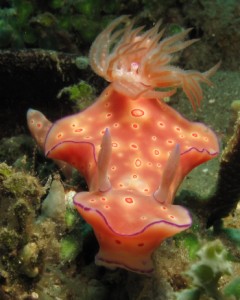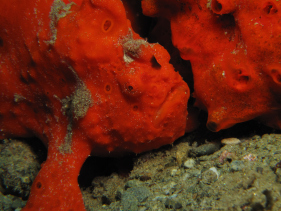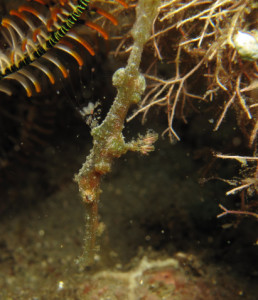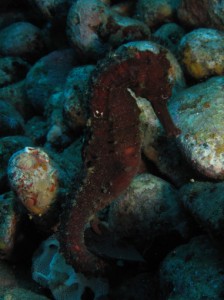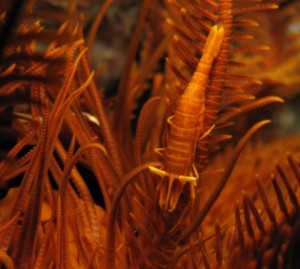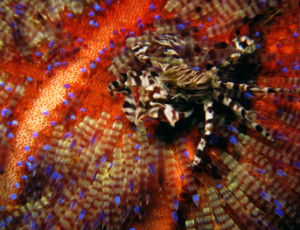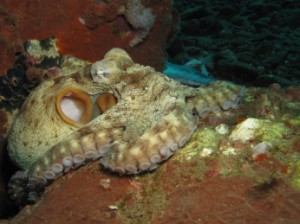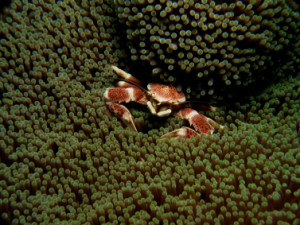News
Creatures of the Muck
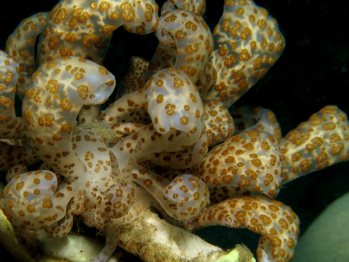
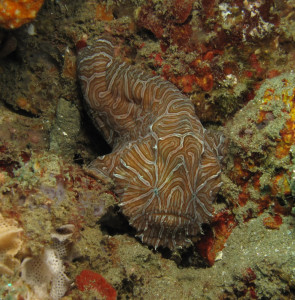 Muck diving. “Le” muck diving. There is no pretty way to say muck diving even if you are French. In fact when you do muck dive for the first time and look out over a silty, sandy slope, or a pile of coral rubble, it seems that a hopeless hour underwater searching for some form of life, including your dive buddies, is ahead. I was especially worried about unfairly judging muck diving at Maluku Divers in Ambon because my trip there immediately followed a boat trip through Raja Ampat which is so full of color and life everywhere. But with a beautiful Balinese meal sitting in front of me at the end of the first day of diving on Ambon, my thoughts were that, perhaps all of the previous 15 days of travel, including three international flights through four countries, two domestic flights, and a liveaboard trip of twelve days, was just to arrive at Maluku Divers on Ambon.
Muck diving. “Le” muck diving. There is no pretty way to say muck diving even if you are French. In fact when you do muck dive for the first time and look out over a silty, sandy slope, or a pile of coral rubble, it seems that a hopeless hour underwater searching for some form of life, including your dive buddies, is ahead. I was especially worried about unfairly judging muck diving at Maluku Divers in Ambon because my trip there immediately followed a boat trip through Raja Ampat which is so full of color and life everywhere. But with a beautiful Balinese meal sitting in front of me at the end of the first day of diving on Ambon, my thoughts were that, perhaps all of the previous 15 days of travel, including three international flights through four countries, two domestic flights, and a liveaboard trip of twelve days, was just to arrive at Maluku Divers on Ambon.
Although we took one of the longest, but most scenic, ways to get to Ambon, once we arrived there, our traveling was over. Our first dive at Laha I, along the southern coast of Ambon Bay, was reported to be an absurdly long interval away from the resort when in fact it took less than five minutes – barely enough time to be introduced to Jamal, our experienced dive guide from Lembeh, Mo our boat driver, and Hafez, a young Indonesian king who helped us with our equipment on the day boat. Topside, this dive site happens to be a small but active wharf area where people seem to both live and work on their boats. The children are especially intrigued by the foreign divers. They wonder why we use our money to travel so far just to see the fish right under their boats.
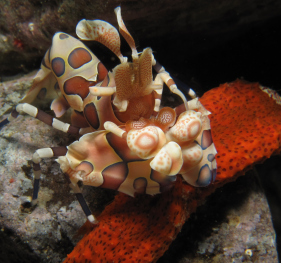 We did a backward roll into the warm water and swam to a pile of rubble directly under the boats. It was noon so I was completely surprised when it was a mandarin fish colony that we were on a mission to observe. My previous encounters with mandarin fish were to watch them having sex at 6:30 in the evening, but they were also busy scampering about at noon, just ignorant of the opposite sex and yet brilliant against their colorless home. I was so focused on getting that perfect photo of a mandarin fish that I almost missed just how many other creatures inhabited this rather small rubble complex. Banded pipefish were just hanging in the water, and very long white antennae revealed the location of the largest banded coral shrimp that I had ever seen. One of the oddest-looking fish, an estuarine stonefish, was lying there like a sunken shipwreck. With the exception of the stonefish that seemed cemented into this habitat, I found it difficult to understand that out of the entire ocean these creatures chose this noisy, close to shore site, and yet they live here together at least during daylight, harmoniously. These were my first 30 minutes in Ambon.
We did a backward roll into the warm water and swam to a pile of rubble directly under the boats. It was noon so I was completely surprised when it was a mandarin fish colony that we were on a mission to observe. My previous encounters with mandarin fish were to watch them having sex at 6:30 in the evening, but they were also busy scampering about at noon, just ignorant of the opposite sex and yet brilliant against their colorless home. I was so focused on getting that perfect photo of a mandarin fish that I almost missed just how many other creatures inhabited this rather small rubble complex. Banded pipefish were just hanging in the water, and very long white antennae revealed the location of the largest banded coral shrimp that I had ever seen. One of the oddest-looking fish, an estuarine stonefish, was lying there like a sunken shipwreck. With the exception of the stonefish that seemed cemented into this habitat, I found it difficult to understand that out of the entire ocean these creatures chose this noisy, close to shore site, and yet they live here together at least during daylight, harmoniously. These were my first 30 minutes in Ambon.
The psychedelic frogfish’s coloring was also a bit of a mystery to me. It is usually obvious why a frogfish looks as it does; generally I am not sure that I have actually seen one when I have seen it because they imitate their habitat so well. Although the overall color of the psychedelic frogfish allows it to blend in with the sand of Ambon, there are vibrant white lines that extend radially from its eyes and then swirl around over the main part of its body. It was not until I read about this fish, where these patterns were shown to parallel those from certain hard corals, that I could begin to see how the fish evolved to mimic its environment. However, the lines also have a sort of hypnotizing affect on the viewer, and perhaps have a dual purpose in distracting as well any prey so that it loses concentration for a moment.
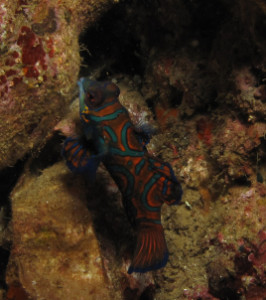 The dives in Ambon rarely went below twenty meters. Only once did I find myself at twenty-five meters and that was to watch a flamboyant cuttlefish that we had inadvertently chased to this depth. Most dives occurred on this same coast, just different sections of it. Even though the landscape was somewhat similar overall, sloping sandy, I was starting to feel that there were different neighborhoods. The Laha dives were where the harlequin and bumblebee shrimp, pipefish, and assorted frogfish lived in the rubble and the sand. Further west, the landscape becomes more covered with corals and especially crinoids. Here there is also a jetty, Air Manis Jetty, where a different lifestyle is in development. There is quite a bit of human refuse where eels and giant banded coral shrimp could find a home. The crinoids here have space to move about the sand like ladies in 17th century ball gowns and were sometimes escorted by a matching ornate or long nosed ghost pipefish. Octopi displayed themselves openly in daylight, and fat nudibranchs were busy chewing the sponges that covered the pilings of the pier.
The dives in Ambon rarely went below twenty meters. Only once did I find myself at twenty-five meters and that was to watch a flamboyant cuttlefish that we had inadvertently chased to this depth. Most dives occurred on this same coast, just different sections of it. Even though the landscape was somewhat similar overall, sloping sandy, I was starting to feel that there were different neighborhoods. The Laha dives were where the harlequin and bumblebee shrimp, pipefish, and assorted frogfish lived in the rubble and the sand. Further west, the landscape becomes more covered with corals and especially crinoids. Here there is also a jetty, Air Manis Jetty, where a different lifestyle is in development. There is quite a bit of human refuse where eels and giant banded coral shrimp could find a home. The crinoids here have space to move about the sand like ladies in 17th century ball gowns and were sometimes escorted by a matching ornate or long nosed ghost pipefish. Octopi displayed themselves openly in daylight, and fat nudibranchs were busy chewing the sponges that covered the pilings of the pier.
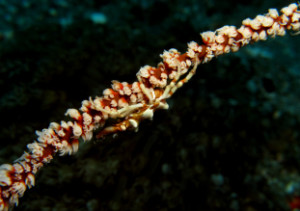 Each hour underwater at Ambon went by like lightening for me. I am not sure what kind of rating system one can apply to diving in Ambon. A star rating system does not seem accurate because it conjures up more typical images like corals and blue water and big animals and whether there is current or not. Things are not swimming around much and if they do have fins they can also have legs attached to creep around, and sometimes your photos of an odd creature inadvertently advertise Coke. I am a scientist, and I cannot help but think of evolution when I am under the water. All sorts of ideas pop into my head, like what exactly was evolution thinking, and how genetically different am I really than the rhinopias scorpionfish? To me it seems that Ambon is a collection of evolution’s experiments or abandoned ones in addition to the usual animals, and perhaps a rating system should correlate to remarkable skills of evolution at work here and your confidence level as a diver when you leave.
Each hour underwater at Ambon went by like lightening for me. I am not sure what kind of rating system one can apply to diving in Ambon. A star rating system does not seem accurate because it conjures up more typical images like corals and blue water and big animals and whether there is current or not. Things are not swimming around much and if they do have fins they can also have legs attached to creep around, and sometimes your photos of an odd creature inadvertently advertise Coke. I am a scientist, and I cannot help but think of evolution when I am under the water. All sorts of ideas pop into my head, like what exactly was evolution thinking, and how genetically different am I really than the rhinopias scorpionfish? To me it seems that Ambon is a collection of evolution’s experiments or abandoned ones in addition to the usual animals, and perhaps a rating system should correlate to remarkable skills of evolution at work here and your confidence level as a diver when you leave.
Gear News
Go anywhere with Stahlsac
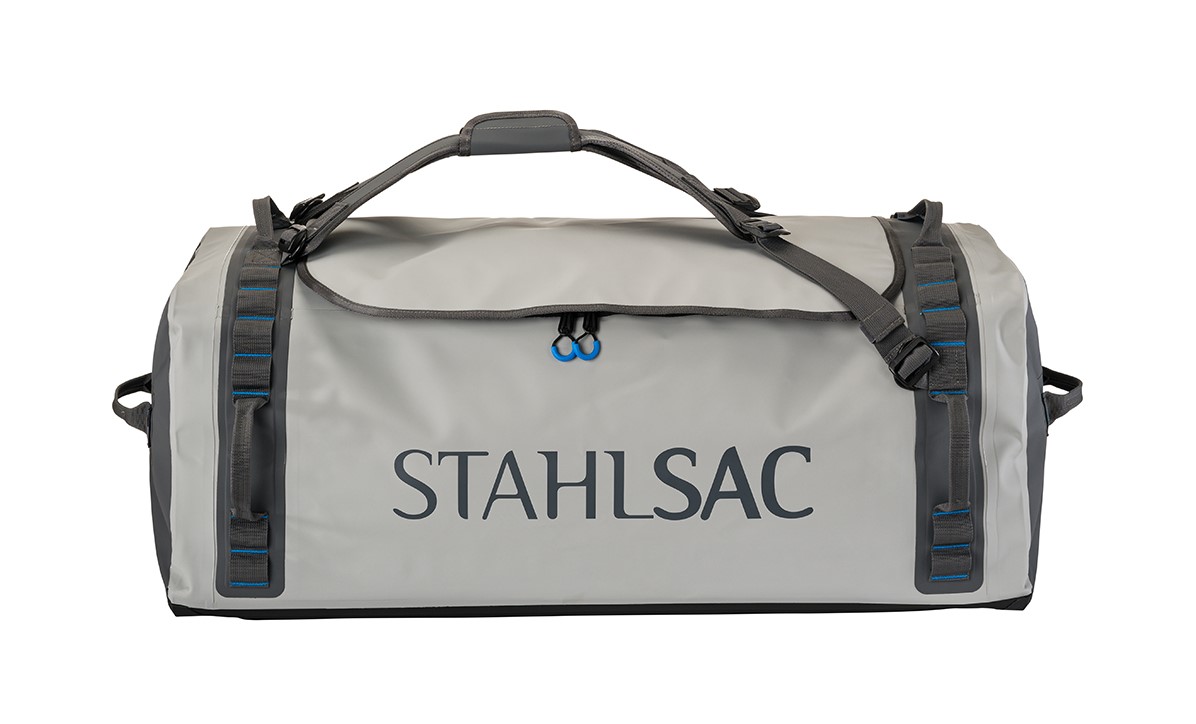
Stahlsac dive bags and travel luggage are built for our community of divers, surfers, kayakers and outdoor explorers who need bags that are constructed with durability, toughness, and 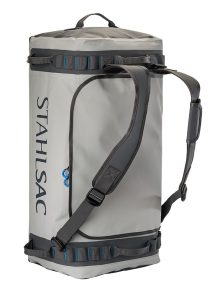 the highest quality the industry has ever seen. We were founded by one man determined to build better watersports and dive bags, and today, that mission is carried on by many. Adventure doesn’t just present itself; it requires discovery. When we design dive bags, we make sure they are tough enough for you to explore in all conditions—warm and cold, wet and dry—to the nearest and farthest reaches of the earth. And for those times you want to push the boundaries of adventure, Stahlsac dive bags make sure you can truly GO ANYWHERE.
the highest quality the industry has ever seen. We were founded by one man determined to build better watersports and dive bags, and today, that mission is carried on by many. Adventure doesn’t just present itself; it requires discovery. When we design dive bags, we make sure they are tough enough for you to explore in all conditions—warm and cold, wet and dry—to the nearest and farthest reaches of the earth. And for those times you want to push the boundaries of adventure, Stahlsac dive bags make sure you can truly GO ANYWHERE.
Abyss Duffels
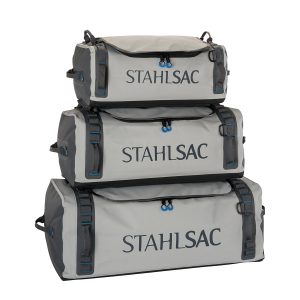 Made to be your partner-in-crime on every adventure, Stahlsac’s Abyss Duffels protects your gear from Mother Nature’s worst. Tough and 100% waterproof with double-TPU nylon material that shrugs off daily wear-and-tear, and RF-welded seams further boost the bag’s potential for lifelong exploring. Get Wet. Get Lost. Go Anywhere with Abyss.
Made to be your partner-in-crime on every adventure, Stahlsac’s Abyss Duffels protects your gear from Mother Nature’s worst. Tough and 100% waterproof with double-TPU nylon material that shrugs off daily wear-and-tear, and RF-welded seams further boost the bag’s potential for lifelong exploring. Get Wet. Get Lost. Go Anywhere with Abyss.
- A weatherproof duffel for trips, travel, and adventure
- Ultra-durable double-TPU nylon protects your gear
- Material repels water and keeps your equipment dry
- RF-welded seams are flush, tough, and waterproof
- Removable straps transform duffel into backpack
- Zippered internal stow compartments carry essentials
- External zippered flap is easy to open and close
- Welded external handles make transporting a breeze
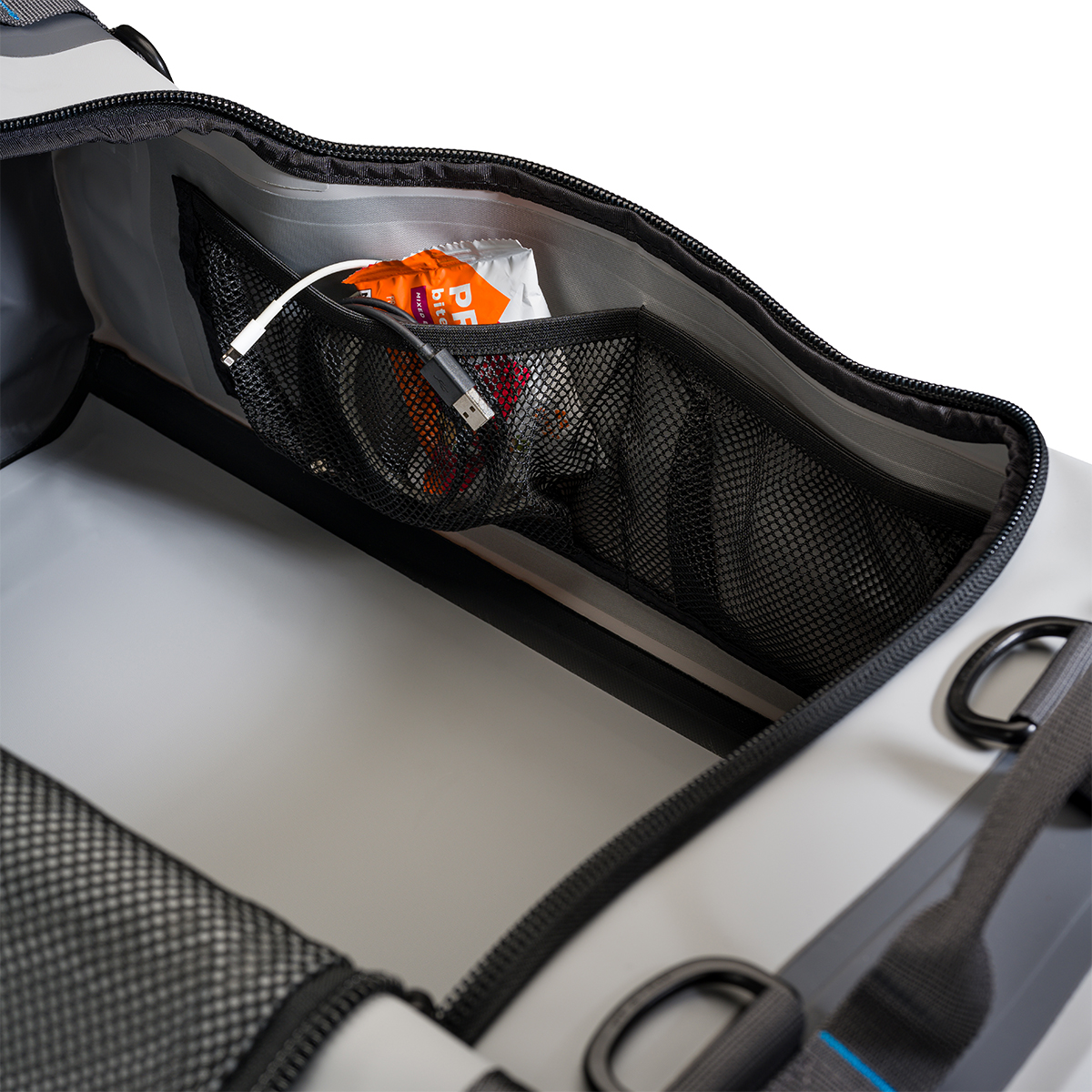
Panama Mesh Backpack
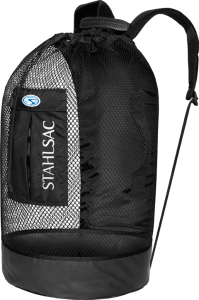 The most copied design in scuba diving, the Stahlsac Panama Mesh Backpack is the “original” design and features two high-density foam padded shoulder straps, extra durable polyester mesh, duffel bag handles and our unique zippered dry pocket inside that combines with a wet pocket outside. The bottom’s built from reinforced 18-gauge PVC nylon to combat the wear and tear of your active coastal lifestyle, and, as a bonus in every bag, we supply a 12″ x 12″ mesh drawstring satchel for extra stowing utility. Pack up your beach kit and go.
The most copied design in scuba diving, the Stahlsac Panama Mesh Backpack is the “original” design and features two high-density foam padded shoulder straps, extra durable polyester mesh, duffel bag handles and our unique zippered dry pocket inside that combines with a wet pocket outside. The bottom’s built from reinforced 18-gauge PVC nylon to combat the wear and tear of your active coastal lifestyle, and, as a bonus in every bag, we supply a 12″ x 12″ mesh drawstring satchel for extra stowing utility. Pack up your beach kit and go.
- Density foam padded shoulder straps
- Outside wet/dry pockets
- 2 Carry handles
- Tough, snag-resistant polyester mesh
- Reinforced PVC bottom
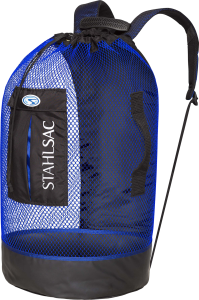
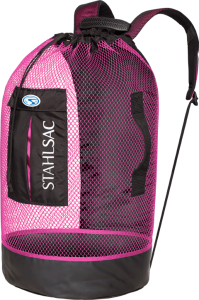
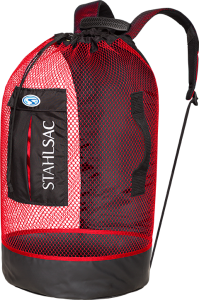
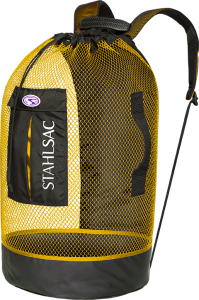
For more information about Stahlsac bags, visit www.stahlsac.com/dive-bags.
Sea & Sea is the home of Stahlsac and other leading diving brands in the UK.
Blogs
EXCLUSIVE: Jeff Goodman interviews Mark Spiers, CEO of New Scuba Diving Training Agency NovoScuba

In a video recorded exclusively for Scubaverse.com, Jeff Goodman interviews Mark Spiers, CEO of new scuba diving training agency NovoScuba.
Find out more about NovoScuba at www.novoscuba.com.
-

 News3 months ago
News3 months agoCapturing Critters in Lembeh Underwater Photography Workshop 2024: Event Roundup
-

 Marine Life & Conservation Blogs3 months ago
Marine Life & Conservation Blogs3 months agoCreature Feature: Swell Sharks
-

 Blogs2 months ago
Blogs2 months agoMurex Resorts: Passport to Paradise!
-

 Gear Reviews3 weeks ago
Gear Reviews3 weeks agoGEAR REVIEW – Revolutionising Diving Comfort: The Sharkskin T2 Chillproof Suit
-

 Blogs2 months ago
Blogs2 months agoDiver Discovering Whale Skeletons Beneath Ice Judged World’s Best Underwater Photograph
-

 Gear Reviews3 months ago
Gear Reviews3 months agoGear Review: Oceanic+ Dive Housing for iPhone
-

 News2 months ago
News2 months agoPADI Teams Up with Wellness Brand Neuro to Drive Ocean Change and Create a Blue State of Mind
-

 Marine Life & Conservation2 months ago
Marine Life & Conservation2 months agoSave the Manatee Club launches brand new webcams at Silver Springs State Park, Florida


